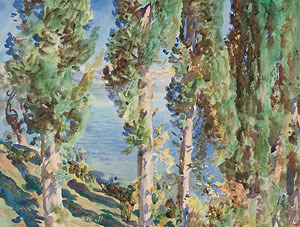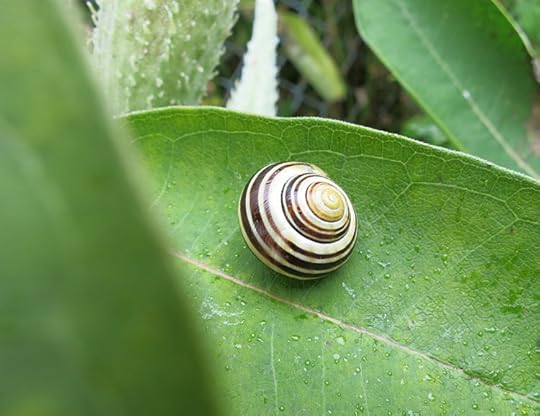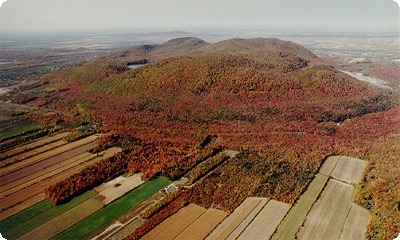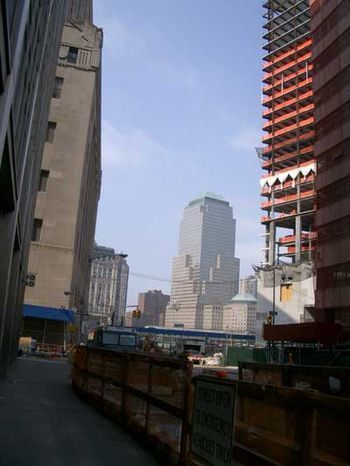Elizabeth Adams's Blog, page 72
October 5, 2013
Emerging into Empire

Arrival. US Airways terminal, National Airport, Washington, D.C.

Metro tunnel, Dupont Circle, Washington, D.C.
Metro Tunnel Entrance/Exit, Dupont Circle
Thus in silence in dreams’ projections,
Returning, resuming, I thread my way through the hospitals,
The hurt and wounded I pacify with soothing hand,
I sit by the restless all the dark night, some are so young,
Some suffer so much, I recall the experience sweet and sad.
Walt Whitman, "The Wound Dresser:"
October 4, 2013
And the air itself
October 3, 2013
From the Air
The Green Mountains of Vermont, pretty reddish today.
I'm heading south again, this time to Washington, D.C.. Impeccable timing, wouldn't you say? Even the National Mall is closed...But the flight itself is making up for it. The first leg this morning, from Plattsburgh to Boston, was achingly beautiful, as we flew over my former home terrain: Vermont, the Connecticut River Valley, New Hampshire, and on to the Atlantic coast and Boston, where I'm now sitting in the airport.
September 30, 2013
Grazie, Marcella
Marcella Hazan, who died yesterday at the age of 89, has been an integral part of my life for decades. Her classic texts on Italian cooking taught me how to use fresh ingredients simply, so that their essential nature is never lost in the cooking or in elaborately concocted sauces. Her style of cooking was a perfect fit with a life lived in Vermont, where market farming and my own home garden provided the inspiration and ingredients for most of our meals, and then in Montreal, where the French and mixed-ethnic population, and high culinary standards, mean that top-quality ingredients are always available.
 From Marcella, I learned to make the simplest, fastest, and best tomato sauce -- which we prepare from fresh Italian tomatoes at least twice a month and use on everything from pasta to pizza. I've made many of her other pasta sauces, her risottos, her wonderful vegetable recipes, her meat, chicken and fish dishes, her rosemary-studded foccacia, her cakes: her "farm wife's pear tarte," made from hard Rocha pears and almonds, is one of my all-time favorites, full of freshness and simplicity.
From Marcella, I learned to make the simplest, fastest, and best tomato sauce -- which we prepare from fresh Italian tomatoes at least twice a month and use on everything from pasta to pizza. I've made many of her other pasta sauces, her risottos, her wonderful vegetable recipes, her meat, chicken and fish dishes, her rosemary-studded foccacia, her cakes: her "farm wife's pear tarte," made from hard Rocha pears and almonds, is one of my all-time favorites, full of freshness and simplicity.
Like all the best cookbook authors, she was a teacher, and her voice, which comes through so clearly in her books, always impressed me; I felt she knew exactly what she was talking about and it made me want to follow her instructions to the letter,and even more, to learn her techniques. She didn't just write recipes, she explained the nature of each particular food, whether it was a grain of arborio rice or a perfect eggplant: that was what I appreciated, and what I wanted to know.
When I think of her now, it's in a black-and-white photograph -- not the one above, though I like that too -- from the flyleaf of one of those books. She's standing with her husband, along a canal in Venice, where they were living at the time. The couple appears sophisticated, urban, yet also relaxed, and most of all happy and in love: Victor, the handsome, elegant businessman, who came home every single day to share lunch with his wife; Marcella, the cook and author, looking comfortable, kind, and welcoming, as if we, the readers, were accepting that luncheon invitation too. A part of me, I think, wanted to be them, and in some ways I realize today that I probably absorbed something from that photograph into my own life.
Grazie, Marcella: you'll always live on in my kitchen; thank you so much for your love of food, and for everything you've taught me.
September 25, 2013
A Hike up Mt. St-Hilaire

Last Friday we went for a hike on Mt. St-Hilaire, not far outside the city of Montreal. St-Hilaire, at 411 metres/1348 ft in height, is one of a series of mountains in the region between Montreal and Vermont, called the Monteregie. All of them are isolated, standing above the flat floodplain of the St. Lawrence; once this was the Champlain Sea. These mountains include Mont Royal, Mt St-Bruno, Mt. Gregoire, Mt. Rougemont, Mt. St-Hilaire, Mt Yamaska and some others. Geologically, they're part of the "Great Meteor Hotspot Track." About 125 million years ago, a volcanic hotspot called the New England Hotspot led to
upflows of mountain-forming magma when the North American plate moved
westward over it. At that time, the hotspot was here, and the Alantic Ocean was just beginning to open up. The Monteregian Hills are made of very hard volcanic rock that did not fully erode under the pressure of the glaciers, and now they're all very distinctive landmarks in an otherwise extremely flat landscape. About 25 million years later, the White Mountains of New Hampshire were formed in much the same way; by then the hotspot was located further to the east. Today it's inactive, in the center of the Atlantic Ocean, where it's been overridden by the Mid-Alantic Ridge, but the age of the associated mountains and seamounts created by the New England hotspot has been used to track the movement of the North American and African tectonic plates.
Friday was my birthday, and the weather was beautiful -- so I suggested a hike and a picnic to this place we'd never visited close-up.
We ate our lunch on the shore of this lake, which is a short way up the mountain (see aerial view below.) McGill University owns Mt. St-Hilaire and uses it as a teaching site. The whole mountain is a nature preserve. Half is open to the public year-round, with well-maintained trails for hiking, cross-country skiing and snowshoeing. The other half, which contains primeval forest, remains an untouched reserve. This lake is a backup reservoir and no swimming, fishing or boating are allowed -- but it held a big flock of migrating Canada geese. Mt St-Hilaire also contains a great number of rare minerals -- over 300 -- as a result of alkali-rich agpaitic pegmatite igneous intrusions that only occur in a few other locations, most notably Agpat,Greenland; and sites in northwest Russia and Norway. (Forgive the geo-babble, but I find rocks fascinating!) On to the hike:
The beech-maple climax forest at the lower elevations. I don't think I've ever seen so many beech trees as the dominant species!
It felt good to be out of the city, surrounded by trees and silence. Even though there were a lot of cars in the parking lot, the trails were pretty empty, and the further we climbed, the quieter it got. No airplanes, no traffic, and only the occasional human voice.
Moss-fur.
The terrain got steeper near the top.
And from the summit, a view of the flat, rich farmland stretching in every direction, a quarry just below, and the widely-separated little towns of the Monteregie. Around the base of this mountain and several others are vineyards and apple orchards: something to explore another time. Here's an aerial view from the McGill site: (copyright 2013 McGill University; I'll take this down shortly.) The non-public reserve is the side of the mountain closest to us; we hiked from the lake up to the larger peak behind it, the same one shown in my top photo.
Those are the kinds of fields we used to drive along, on our frequent trips back to Vermont, laid out in the long narrow rectangles characteristic of the early French settlements. A house usually stood at one end, along the road, or rang, with the land stretching back toward a mountain or a river, thus affording each farmer different types of terrain for his use instead of granting all the best land to the wealthiest.
I've become fascinated by -- and fond of -- the distinctive shapes of these mountains and the landscape, so different from New England, and am working now at my first painting of it. More to come...
September 19, 2013
Poplars

Poplars, Sainte-Anne-de-Sabrevois, Quebec. Watercolor on Arches cold press, 10" x 14."
The poplars of Quebec have captivated me ever since my first visit. Romantically, I imagine Samuel Chaplain with his pockets full of seeds, planting the trees that reminded him of his native France. Champlain did plant a lot of things -- horticulture was one of his great interests, and he tried many of the same varieties in different locations in New France before deciding which places would be best for permanent settlements. However they originated, you see these beautiful trees everywhere in the St. Lawrence valley and near the farms that lie between Montreal and Lake Champlain -- and almost nowhere south of the Quebec border, in spite of the presence of many French-Canadians in Vermont, New Hampshire, and New York. They are one of the most iconic aspects of the Quebec landscape, sometimes planted singly, but more often in rows as a windbreak or an allée of trees near a homestead. Sadly, they do struggle in our climate, and you also see bare trees, still with their characteristic shape, but now merely a tall pillar of small upward-reaching branches. The banks of the river and canal near the Expo site were once lined with poplars, but nearly all of those have died. Thy seem to do better out in the country.
I've made a few drawings, and wanted to paint them, but except for a pastel of the Charlevoix that contained some poplars, never have. I was inspired to try by a painting of John Singer Sargent's that I saw in Brooklyn; I think he loved trees as much as do because he painted them a lot, and seemed fascinated by each species' characteristics as well as the individuality of particular trees. Not surprising, from a portrait painter!

John Singer Sargent, Cypresses, Corfu. Watercolor.
This watercolor was started yesterday afternoon and finished this morning. It's the first exploratory attempt at the subject; I'll probably do some others, trying to get closer to the emotional feeling I get when I look at these trees in the wind-swept landscape. This summery view is pretty benign!
A couple of details, just slightly larger than life size.
September 17, 2013
Things we miss

Studio Still Life, September 17, 2013
I've been walking past this scene for a couple of weeks, ever since I changed the pictures on the studio wall, but never really stopped to look at it until my friend V. visited yesterday. She immediately noticed the watercolor and asked if it was new. No, I told her, it's quite old, but I found it in the drawer and felt like putting it up, because it reminded me of fall, and my Vermont garden. Today when I went by I looked more closely, and decided what I really liked was the collection of colors and surfaces and shapes - those cool light greens and blues of the cloth and glass and jar label being echoed in the picture, and the browns and ochres of the wood and brush handles and ceramic pots, and the small touches of dark red here and there. It almost looks like...a painting!
--
It's much cooler here now: fall has really arrived. I wore gloves today for the morning bike ride, and was glad I had them. Now I'm going to go home a little early and make some pasta sauce. It's time for comfort food.
September 15, 2013
Messing around in the Milkweed

While parking the car at the studio today I spotted this snail in the milkweed forest that's growing between the parking lot and the Canadian Pacific railroad tracks. At first I thought it was a monarch caterpillar, curled up, but when I got close I saw it was a snail. It's a fairly large one, and not familiar to me.
I haven't seen a single monarch butterfly yet this year.
But there were more antics going on below.
"Let me call you sweetheart..." But I'm wondering: is this an interracial insect couple, demonstrating against the odious, recently-proposed Quebec Charter of Values? And are those eggs, or tiny aphids? Guess I need to go back and take a closer look, but maybe someone (Dave?) can enlighten me about the identities of these beetles.
September 13, 2013
Why Are New Pigments Important?
Some readers expressed interest in knowing more about the new watercolor pigments. This article from the technical department at Winsor&Newton was influential in persuading me to revamp my palette. It describes some of the best new pigments introduced over the past decade, and explains why they are an improvement.
A couple of weeks ago, before traveling, I emptied my old Cotman field box and replaced all the half-pan colors with 12 professional artist-quality paints. Having tried it out on the road, I'm really glad I've gone to the trouble for my travel box as well as the studio palette. With some extra half-pans, I can switch the pans in and out of the box before going out, depending on what I'm likely to be painting.
My mom, who long ago saw my tendency to be parsimonious with my art supplies, always told me to use the best materials I could, and that if I used them up she'd help me buy more. It's true for brushes, paint, and paper: every one of these elements is vital. The better the tools, the better the results, and the more one enjoys using them. I sometimes wonder if the crummy paper and brushes kids are given in school make it impossible for a lot of them to enjoy painting; inadequate brushes aren't responsive and don't hold a point or sufficient pigment; lower-quality paper is too absorbent and can contain fillers that dull the clarity and brightness of colors, as well as impeding flow and one's ability to lift pigment or add washes and glazes; lower quality colors lack transparency and brilliance, and don't mix cleanly and become muddy faster.
As for colors, it's very personal and you need to experiment to find out what works for you. These are swatches I painted using the colors I'm preferring these days. In general, I seem to be choosing colors from rows 1 and 2. For travel, I took 12 of those, subtracting the magenta, yellow ochre, and pyrrol orange, and adding cerulean blue. But as a basic set of six, you'd be fine with a basic red, yellow, blue, and green such as those on row 1, plus a couple of earth colors, such as quinacridone gold and van dyke brown.
So if you're considering starting -- or re-starting -- to paint, please go out and buy yourself some sheets of high-quality 140 lb cold-press paper and cut it up into smaller pieces, 8 x 10 or so; buy at least two good sable or artist-grade synthetic brushes, a size 10 round and a size 3 or 4 round are good for starters, and a much larger synthetic "mop" for doing washes; and buy a few tubes of professional artist colors: Daniel Smith, Winsor&Newton, Schminke, Rembrandt and Utrecht are all good brands. I guarantee you'll be happier than with cheap sets and cheap paper. The difference will be apparent right away.
September 11, 2013
September 11
In response to Szymborska, 9/11/2013.
Today I read this poem.
And this news story.
And thought, how far we all have fallen.

(Memorial near Ground Zero, February 2004)
It's a very empty feeling.
The sky at Ground Zero, 2004.
But people then, and people now, continue to say "Enough!"

Anti-Iraq War demonstration, my fellow protesters in pens, NYC, February 2004.
Which gives me a small glimmer of hope.






















